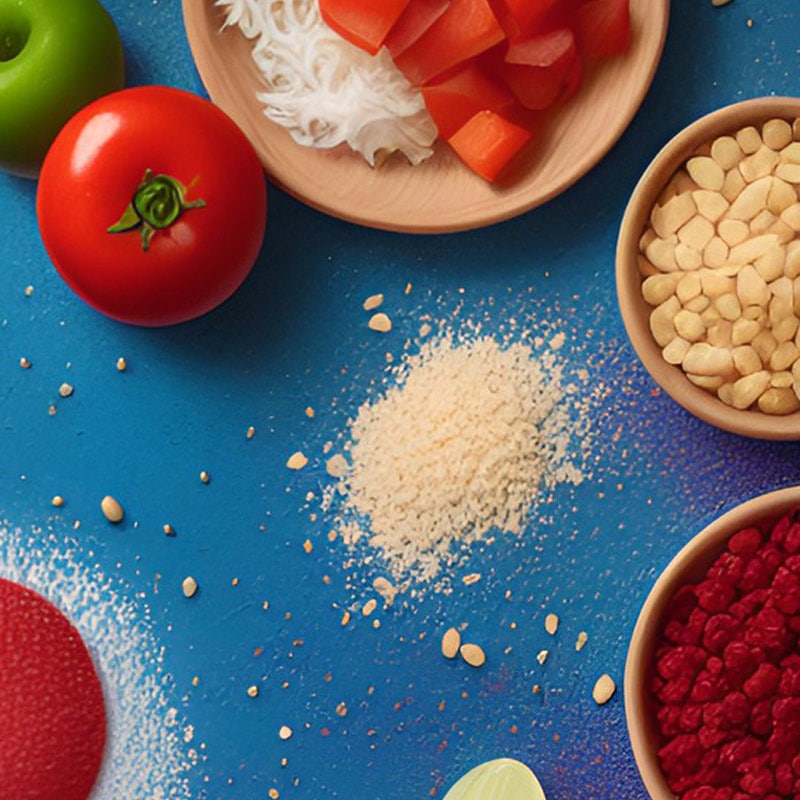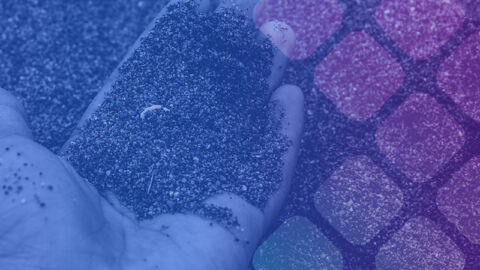On November 12-14, 2021, Mosaic EDGE (formerly GPL Academy) hosted the Environmental Toxin Summit in San Diego, CA as well as streamed online simultaneously. This three-day event focused on the epidemics of toxin exposure, including both toxic chemicals in our environment and mycotoxins from mold. These toxins can cause symptoms of many acute and chronic health disorders. Those who attended the summit learned how to use effective diagnostic and treatment protocols for their patients with toxin exposure and get them on the road to recovery.
The following Q+A is a grouping of responses from Dr. Shaw’s presentations.
The material contained within this article is not intended to replace the services and/or medical advice of a licensed healthcare practitioner, nor is it meant to encourage diagnosis and treatment of disease. It is for educational purposes only. Any application of suggestions set forth in the following portions of this article is at the reader’s discretion and sole risk. Implementation or experimentation with any supplements, herbs, dietary changes, medications, and/or lifestyle changes, etc., is done so at your sole risk and responsibility.
IGG FOOD ALLERGY TESTING: SCIENTIFIC EVIDENCE
OF ITS VALIDITY IN CHRONIC ILLNESS
Q: How do you interpret this test in those with total serum IgG4? No value in running it?
A: The IgG Food MAP evaluates IgG1-4, not just IgG4, and is therefore going to provide more detailed information. Exclusively running IgG4 is not ideal since it has a lower (~6%) representation of the IgGs overall, and it has a reduced ability to induce complement and cell activation.
Q: Do you happen to know if there is a difference in raw milk versus conventional milk in the IgG testing?
A: The IgG test is utilizing the protein from dairy milk, but does not differentiate between raw milk and pasteurized milk.
Q: Regarding food allergies- I have been taught that in patients with leaky gut, then of course their “usual” foods will show as allergens because that’s what’s in there and are the proteins that leak into the blood the most. So, is it elimination diet that’s the most helpful or healing the gut lining? Or a combination of both?
A: Depends on the cause of the leaky gut. In general, reducing the inflammatory foods while the cause is being identified/treated is useful. This can be done by the elimination diet, but the elimination diet can be very restrictive in nature and cumbersome for a lot of patients. The IgG Food Allergy is a short cut to identifying the foods that are causing inflammation without having to remove unnecessary foods, making it easier for the patient.
Q: How does fasting affect IGG?
A: IgG’s are the immunoglobins with the longest half-life (~33 days), and therefore a fasted state should not influence the results.
Q: Cyrex labs say their food allergy testing evaluates cooked and raw food as we don’t eat everything raw, and we eat some in cooked form. Does Great Plains also factor this in their tests? Is the difference in type important?
A: GPL evaluates various forms of the proteins in the foods (e.g. Cows’ and goats’ milk, casein, whey, beta-lactoglobulin, sheep’s yogurt, yogurt, mozzarella and cheddar cheese) to account for the changes in epitopes, which can occur during food processing. Remember that any protein, cooked or raw, undergoes exposure to concentrated acid and the enzyme pepsin in the stomach and then extensive exposure to other digestive enzymes in the small intestine. These alterations are much more profound than whether a protein is cooked or raw. Cooking does not change the amino acid sequence of a food while acid and digestive enzymes cause pronounced changes in amino acid sequences of food.
Q: How effective is the IgG Food map on a patient being treated with Humira? And on Xolair?
A: The IgG response of those individuals on the immune modulators may not be favorable for this testing. Humira targets and blocks TNF-alpha, which could potentially reduce the IgG response. Xolair may also because though it inhibits the binding of IgE, it also influences FcεRI receptors on basophils, potentially reducing the IgG’s reactivity.
ORGANIC ACIDS AND MYCOTOXINS: CORRELATIONS
WITH MOLD IN VARIOUS CHRONIC ILLNESSES
Q: What would you do with pregnant women with mycotoxins? Would you detox them or wait until pregnancy is over?
A: I would advise the woman to move out of the contaminated space immediately. I wouldn’t advise active detox while pregnant as you may increase transference to the fetus.
Q: If glutathione is the issue with provocation, are there other products that may increase the probability of an accurate test? Heat, NAC, use of binders etc. These are so tissue bound I have seen negative tests become extremely positive 3 months later with the use of recommended detox.
A: The test was developed without use of any provocation methods. If you choose to do anything a warm bath/shower or sauna the night before may encourage more toxin into the urine.
Q: For a patient with chronic and relapsing cocci infection for years, would you have a high suspicion of mycotoxicity? Would daily use of itraconazole for over a year affect urine MycoTOX test?
A: It may be in the differential for things to consider. Itraconazole can reduce toxins on the MycoTOX Profile if the mold exposure is eliminated. I would suspect that most mycotoxins would be negative or low after a year of itraconazole if the source of mold in the house has been eliminated.
Q: Do you have a mold treatment protocol vs Shoemaker protocol?
A: Check out New Beginnings Nutritionals’ mold protocol.
Q: I’ve seen patients with histamine intolerance and mold colonization have reactions when taking binders, particularly GI Detox or another combination binder. Is this something you’ve experienced? What would be a good binder or something else to consider first for these sensitive individuals?
A: This is common. Slower administration of binders or use of single agents before a combo product is a strategy to consider. For very sensitive patients allow for reduction in aggravation before addition of next dose, even if that means waiting a few days for the client to feel able to handle another dose.
Q: What testing can be done to determine Mycotoxins in the sinuses? What is the best way to remove Mycotoxins from the sinuses? Is there going to be information about treating sinuses directly in conjunction with the other treatments? Do you have any pearls? What is an example of a nasal anti-fungal inhaler- product and dosage and duration?
A: Urine mycotoxin testing looks at mycotoxins that circulate in the blood stream (all over the body, including the sinus). If you want to know about mold growth in the sinus look at nasal symptoms or consider a nasal swab and culture. For removing mycotoxins you use detox factors like binders and glutathione. For mold removal direct nasal sprays are recommended. Prescription and natural options are available. Consider nasal GSE
Q: Does nano zeolite clinoptilote just bind metals or can it be used with mycotoxins?
A: It can bind to mycotoxins
Q: Can you please give us doses of Binder for infants and children?
A: Dose depends on the binder. Low and slow is always a good strategy. It should not be given more than once a day.
Q: Does a mold colonization on the OAT test need to be treated if the MycoTOX Profile is within reference range?
A: Yes. A colonization can still produce mycotoxins at a low, consistent level. Mold itself has harmful effects, like those of yeast.
Q: Do mold infestations in GI tract produce biofilm? If so, are antifungals always successful in breaking down the biofilm barrier?
A: Biofilms can be produced. Herbal antifungals usually have biofilm disruption properties. Prescriptions may not have this capability. Antifungal with biofilm disruption properties can be successful. Always, is a loaded word and I cannot guarantee it will always be effective.
Q: What is the best anti-fungal treatment regimen for candida?
A: Common antimicrobial herbs can be used to treat candida like garlic, ginger, berberine, etc. there is no one size fits all. Nystatin or Diflucan are also options.
Q: I have a patient with high fungal markers on OAT, but his mycotoxins had only a slight elevation in ochratoxin. Please advise.
A: A colonization can still produce mycotoxins at a low, consistent level. Mold itself has harmful effects, like those of yeast. The person is most likely not currently exposed to water damage.
Q: How many days prior to taking the OAT test should we be fasting from medications or supplements that could mask correct OAT results?
A: You only need to fast from the listed foods/supplements. Others can be discontinued if you would like for your own interpretation purposes. A good time frame is 1 week if this is possible for the patient.
Q: Please comment on treatment for Chaetoglobosin A, particularly when both the house and the office where the patient lives were found negative?
A: Treatment for this toxin is like others. You would need to remove the source and detox the toxins. Binders like charcoal bind all mycotoxins at some level and can be effective for this toxin too. Consider a combo binder product. I suspect that the house and office mold testing are likely giving false negative results.
Q: What botanicals do you use to treat SIBO?
A: Common antimicrobial herbs can be used to treat SIBO like garlic, ginger, berberine, etc.
Q: The notes indicate that oxalates are produced by molds like aspergillus and penicillium. Does Chaetoglobosin A also produce oxalates?
A: Chaetoglobosin A is a toxin therefore doesn’t produce anything. Chaetomium mold, which produces chaetoglobosin a, hasn’t yet been shown to produce oxalates.
NON-METAL TOXIC CHEMICALS AND THEIR EFFECTS
ON HEALTH: GLYPHOSATE AND BEYOND
Q: Do any of the GPL-TOX values extrapolate polyethylene glycol or polysorbate? Will it be added?
A: Both Polyethylene glycol (PEG) and polysorbate utilize ethylene oxide in the manufacturing process.
Q: It was mentioned pine wood is not ideal for a sauna <link sauna to https://www.greatplainslaboratory.com/gpl-blog-source/2016/12/12/how-to-maximize-the-benefits-of-sauna-for-detoxification?rq=sauna>, but a lot of saunas are made with pine wood. Does pine wood inhibit the effects of detoxification? Can you explain further?
A: The resin that pine contains has certain alkaloids, and other nitrogen containing organic compounds, that can be toxic when released with excessive heat.
Q: Can lower toxin levels be significant in those with neurologic compromise? Immune suppression? mycotoxin load etc.?
A: Statistically speaking, above the 95th percentile is the most significant. There are always the outliers who are extremely chemically sensitive, or have multiple comorbidities to which they have overfilled their bucket so to speak, who will react to lower values.
Q: Have you seen any increase in toxins with kids using slime, which uses glue as a base?
A: Not directly.
Q: Can you comment on brevatoxins and red tide? Testing treatment binder types?
A: We are not currently measuring these toxins, but plan to add them in the future. However, the general detoxification method utilized for the other environmental toxins would likely help with the elimination of these toxins, theoretically.
Q: What is your recommendation to detox from glyphosate in addition to removing the source? There are multiple protocols out there. Do you have a favorite?
A: The most important detox method is to switch to organic foods. This step is 10 times more important than other detox methods although Chlorella, sauna, and humic and fulvic acids, have also been recommended.
Q: Does sauna and liposomal glutathione eliminate glyphosate?”
A: Sauna may help but I know of no evidence that glutathione is effective. Switching to an organic diet is the single most important therapy.
Q: What’s best type of sauna (Infrared, near-infrared or far-infrared)? Would you suggest a particular brand for in-home use?
A: IR is the preferred due to its ability to increase the internal temperature without excessive heat. It is generally a good option for patients who are heat sensitive.
Sunlighten has a very good reputation.
Q: Are hyperbaric chambers any help in removing molds and toxic chemicals?
A: Hyperbaric chambers can be helpful in the elimination of the mycotoxins and toxic chemicals by increasing oxidative detox reactions.
Q: Can you explain the difference between NAC and Cysteine and whether Cysteine may be a good substitute if NAC not available?
A: N-Acetylcysteine as compared to L-cysteine (the supplemental form of cysteine derived mainly from swine hair or poultry feathers) has the acetyl group attached to the nitrogen, making it more water soluble, increases the absorption and distribution, as well as reduces the thiol reactivity making it less susceptible to oxidation.





